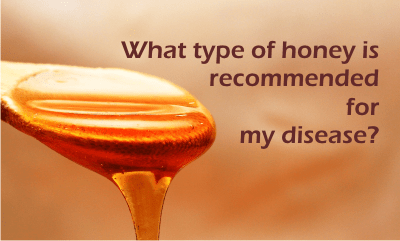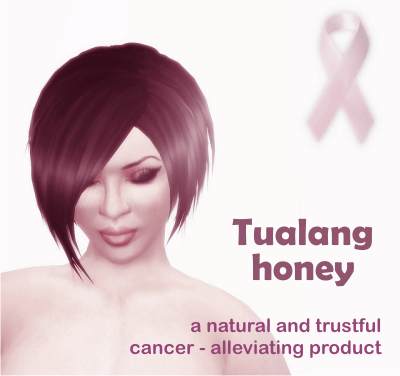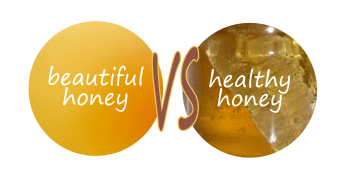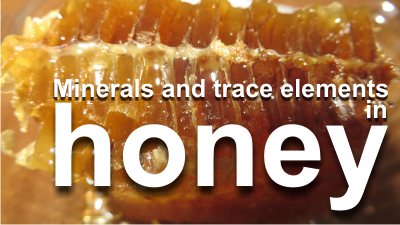The health benefits of honey are well recognized and scientifically proven today. Besides its topical use, honey has a wide range of internal therapeutic uses triggered by its amazing properties. Although all types of honey are good for our health, yet due to their floral source, some of them have specific particularities which recommend them for specific conditions and diseases. And every person wants to know what honey is the best for him.
Here are some of them, focusing on the ones with scientific studies that investigate and support their therapeutic properties. You can find them at each type of honey’s article, on this site.
Also, please always remember that honey is not a magical pill and it is more preventative than curative. If it is too late for you to change your habits, it is not for your children. Help them appreciate honey and whenever possible, replace sugar with honey.
So, let’s see what honey is best for your condition
Cardiovascular diseases
hawthorn, lavender, mint, sunflower, neem,
blackberry (atherosclerosis, varicose veins, hypertension),
sweet chestnut (strengthens the blood vessels, prevents formation of varicose veins and hemorrhoids),
coriander (activates blood circulation and lowers cholesterol),
rape (against cholesterol),
phacelia (maintains blood cholesterol levels),
sage (helps in cases of poor blood flow) honeys.
Honey lowers levels of homocysteine (HCY), a metabolite of the amino acid methionine involved in cellular metabolism and the manufacture of proteins. Elevated HCY levels are responsible for about 10% of the coronary deaths each year in the United States.
Honey lowers triglyceride and cholesterol levels and increases HDL (good) cholesterol. The fructose in honey actually protects against triglyceride formation.
Digestive conditions
Rosemary, thyme, mint (spearmint), sunflower, honeydew, sweet chestnut, manuka, sidr
Anzer honey – protects the stomach against increased vascular permeability due to alcohol ingestion.
dandelion honey – reduces gastric juice acidity by 56% ( BALTUSKEVICIUS et al , 2001) and also keeps the bowels in a healthy condition, which is particularly important to dyspeptics (persons who suffer from indigestion or irritability)
Jarrah honey (helps combat stomach bacteria like Helicobacter pylori that may cause ulcers and bad breath).
linden honey (reduces the hypersecretion of hydrochloric acid in the stomach (in the form of heat) or, on the contrary, increases it (in the cold state). Also diuretic and laxative),
coriander honey (constipation and flatulance colic, gastritis and ulcers).
rapeseed honey (for ulcer, especially rape pollen) – also good for colon and intestinal health
rosemary honey (in intestinal conditions, especially slow digestion)
sage honey, sourwood and alfalfa honeys (stimulate the growth of five human intestinal bifidobacteria)
pear honey (enterocolitis)
noni (morinda) honey – gastric ulcer healing activity
Diarrhea: apple honey, blackberry, red clover, oregano, Moroccan oregano honey
Constipation: honeydew honey (Oligosaccharides from honeydew honey have prebiotic activity), oak, coriander, sidr honeys, loquat honey.
Respiratory conditions
BronchoMel,
honeydew (forest), thyme, fir, spruce, lime, marjoram (a plant closely related to oregano), eucalyptus, Neem, red clover, sidr
sunflower (bronchites), blackberry (upper respiratory disorders),
white clover – expectorant.
sage – expectorant.
Renal diseases
sweet chestnut, fruit trees, wild rose, rape (brassica), heather , sunflower, sidr
red clover – for fluid retention
dandelion – for kidney and gall bladder diseases
Liver diseases
Rosemary, coriander, dandelion, sidr
Anzer honey – treats and prevents liver damage.
citrus honey – decreases the affects of alcohol intoxication
clover and rape honey – for hepatitis, causing a decrease of alanine aminotransferase activity (by 9 to 13 times) and of bilirubin production by 2.1 to 2.6 times.
rosemary honey – treats hepatic insufficiency
heather Polish tradition uses it for the treatment of prostate, liver and biliary system diseases.
Any honey facilitates the detoxification of alcohol. The fructose from honey facilitates the detoxification of alcohol by restoring NAD, the liver enzyme responsible for metabolizing alcohol.
Anemia
avocado (especially good for anemia as it is rich in calcium, magnesium, iron, potassium or phosphorus deficiency),
heather, blackberry, rosemary, sweet chestnut honey, sidr
honeydew honey (But not linden honey, as it is said to obstruct iron absorption),
Lifemel honey: Life Mel Honey was effective in decreasing the incidence of anemia in 64% of the patients, decreasing the incidence of severe neutropenia and lowering the incidence of potentially fatal thrombocytopenia (low platelets).
Rosemary honey – a powerful tonic, recommended to children and old people. Also good for workaholics.
Red clove honey: helps fix calcium in bones.
Flu
Raspberry (Rubus idaeus L.) and linden tree honeys (for their confirmed diaphoretic and antipyretic effects);
Manuka honey (antiviral effect)
Oral problems
neem honey, jarrah honey – clears mouth ulcers and bad breath
The use of honey chewing-gum three times a day after meals significantly reduces plaque and the risk of gingivitis. It also has therapeutic properties in the treatment of gingivitis and periodontal disorders.
Immunity
sweet chestnut, dandelion, sidr honeys
Honey rich in antioxidants, stimulates our immune system. Look for the darker ones.
Sleeping problems
Any type of honey promotes restorative sleep and improves sleep quality and duration, when consumed before bedtime. Restorative sleep reduces risk for hypertension and other metabolic conditions and diseases.
Menstrual disorders
blackberry, oregano, sidr honeys, Moroccan oregano honey
Depression, anxiety, attention deficit-hyperactivity disorder (ADHD)
lavender honey, buckwheat, linden tree, honeydew honeys (depression an neuroses)
Hang-over
leatherwood honey from Tasmania. Generally, honey is known to be an excellent detoxifier of liver, being recommended to be taken before the drinks, and immediately after.
Mountains sickness
Skin conditions
sage honey, sidr honey – Reduces the time of healing wounds and deep scars.
rosemary honey – Moisturizes the skin.
kanuka honey – for acnee and rosaceea
manuka honey – for wound, including: traumatic wounds, surgical incision sites, burns, sloughy wounds, and pressure ulcers.
pine honey – For open skin pores and withered, aged skin
revamil, activon, medihoney, surgihoney– for any hard to heal wounds
The use of honey in surgery is today strongly recommended for topical treatment of postoperative wounds, such as Cesarean sections. The topical use of concentrated raw honey has been proven to promote faster eradication of pathogenic bacteria, reduce the length of antibiotic treatment and hospitalization and prevent wound dehiscence and eschar formation.
Pain
honeydew honey (aka forest honey), chestnut honey – a pain-soothing effect triggered by quinoline alkaloids
Fatigue
linden (lime, basswood) honey, sweet chestnut (for both physical and mental fatigue), sunflower honeys
Osteoporosis
rapeseed honey, sweet chestnut honey, buckwheat promote the regeneration of bone tissue)
Diabetes
jarrah, acacia (with low GI), tualang, neem honey, Moroccan oregano honey,
coriander (regulates insulin levels ),
buckwheat – Folk medicine says buckwheat influences the process of glucose tolerance. For this, one should mix one spoon of buckwheat honey with three tablespoons of yogurt or milk and leave it over night in a warm place. (Then eat it in the morning on empty stomach.) Also recommended to diabetics and for the treatment of inflammatory conditions of the kidney, urinary tract and joints;
Sage honey may stabilize our blood glucose level. According to some apitherapists, despite being high in fructose, it seems that this honey does not lead to the rise of sugar level in the blood
noni (morinda) honey
Rape honey (brassica honey) can be consumed in moderate amounts by type 1.
Honey has a lower insulin response than that produced by the ingestion of similar amounts of sucrose or HFCS, thus delaying or preventing the development of insulin resistance. Insulin resistance and intracellular oxidative stress are the underlying causes of many diseases and conditions associated with the metabolic syndrome and diseases of aging.
Cancer
buckwheat, pine, tupelo,
eucalyptus honey – is helpful in the treatment of non‑small cell lung cancer patients with bone metastasis
gelam honey – has been found to kill liver cancer and colon cancer cells exhibiting selective cytotoxicity, anti-angiogenic, cytotoxic, and anti-proliferative properties. It also acts a radioprotector against gamma-irradiation by attenuating radiation-induced cell death.
Nenas honey – colon cancer
manuka honey – against colon adenocarcinoma, has antiproliferative activity of manuka honey on three different cancer cell lines, murine melanoma and colorectal carcinoma as well as human breast cancer cells in vitro.
strawberry tree honey – against colon cancer
thyme honey – may prevent cancer related processes in breast, prostate and endometrial cancer cells.
tualang honey – induces apoptosis and disrupts the mitochondrial membrane potential of human breast and cervical cancer cell lines
LifeMel honey – for acute febrile neutropenia
Egyptian clover honey – Febrile Neutropenia in Children With Acute Lymphoblastic Leukemia
Overheated honeys (not raw) could potentially compensate the loss of quality by winning anti-cancer properties, due to HMF, a compound found in heated honey.
All honeys have antimutagenic and antitumor properties. They indirectly lower overall cancer risks and improve the body’s ability to fight cancer by several known mechanisms of action, including impeding the replication and growth of cancer cells and improving immune system functioning.
Today honey is used in oncology as a barrier against the implantation of tumors in laparoscopic oncological surgical procedures. In the same field, the intake of honey reduces chemotherapy-related neutropenia fever by alleviating pancytopenia, of which chemotherapy fever is a symptom.
Antioxidant honeys
buckwheat, jarrah (2 to 3 times higher than in manuka honey or leatherwood honey), honeydew, blackberry, blueberry, heather, pine, tualang, Indian forest, gelam, pineapple, lavender, strawberry tree honeys
Croatian honeydew honey presented the highest radical scavenging activity (1.39 mmol Trolox/100g honey);
Bulgarian honey presented the highest value of total antioxidant power (11.45 mmols Fe2+/100 g honey).
Sidr honey from Yemen
Stingless honey
Antioxidants are substances that prevent and fight against many chronic and age dependent pathological conditions like cancer, diabetes, atherosclerosis, cataracts and other chronic pathological conditions.
Anti-inflammatory honeys
Gelam honey, neem, rosemary, spruce, rhododendron, tualang,
sidr (higher effect than aspirin and indomethacin)
Antibacterial honeys
blueberry, buckwheat, chestnut, cotton, fire-weed, heather, jarrah, honeydew, linen vine, red gum, revamil, tualang, ulmo (MRSA),
berringa (Helicobacter pylori; Methicillin-resistant Staphylococcus aureus (MRSA), E.coli, Streptococcus pyogenes), blackberry, marri , kanuka,
lavender (Candida krusei.),
manuka honey – against many strains of bacteria
sidr honey – from Yemen (MRSA, P. Aeruginosa)
Greek pine honey (S.marcescens, and E. coli, B. sphaericus and B. subtilis.)
tualang honey (Streptococcus pyogenes, Salmonella typhi, Staphylococcus aureus, coagulase-negative Streptococcus spp., and Escherichia coli.)
Stingless honey
Contraindications:
Allergy: Cases of honey allergy are rare, yet possible. Make sure you try first a very small quantity.
Irritable Bowel Symptom (IBS) – DO NOT EAT any kind of honey in your IBS crisis. After the treatment, reintroduce honey in your diet, little by little. Please read the article: Can I have honey in IBS?
Always remember that honey is more preventative than curative!
References and further reading:
file.scirp.org/pdf/Health20090400005_87856180.pdf
The New Honey Revolution: Restoring the Health of Future Generations, by Ron Fessenden






Dear Laura
I was reading this website with interest. I love honey and usually I buy lavendar/ eucalyptus /manuka honey. FYI, I am coming to 59 years old, a breast cancer overcomer and am also asthmatic ie I have sensitive airways – to smoke/ perfume. I am wondering what type of honey is good to consume to have great health, along with other healthy food. Often, I found that the honey I bought, even Manuka honey – after opening, I see tiny little ants coming around and feast on the honey. Some doctors told me that honey is also sugar and I don’t want to get diabetes because of consuming honey on a regular basis – would you advise me ? Thanks so much.
Hi Kay,
Yes, doctors say that about honey and diabetes. For fear, of course. Please read these articles to have a more detailed understanding: Can diabetics eat honey? and Can diabetics eat MANUKA HONEY?
You’ll see that most naturopaths recommend eating honey, but not manuka honey. Unless it is regular, which is with no, or a low MGO content.
Lavender honey is truly a special honey, like manuka honey is, eucalyptus as well.
The best honey to consume for a good health is a raw organic honey. The type is not that important, if you want to take it prophylactic.
All the best!L
Hello thank you for the informative article although I am wondering that there is no mention of stroke nor bashkir honey. I am 37 years old, got a stroke and an internal carotid artery stenosis 8 months ago, any advice from your end would be highly appreciated.
Best regards
Hello, I am a manufacturer of oak honeydew honey from Bulgaria. I can give you honey for research or consumption.
http://www.manovmed.bg
Hi, Todorov. I’ve added your website address into your comment, so people can check it directly. (I appreciate you not trying to insert a free link here. 🙂 But I support beekeepers and recommend people to eat good raw honey, so here it is!) Oak honeydew honey is an excellent choice, not very much researched unfortunately. And a beekeeper knows that this type of honey is not easy to make. I hope you managed to go smoothly through winter.
All the best!
Laura
Dear Laura,
Thanks so much for your fast respond and making time for us! I much appreciate!
Thanks also for the great tips you gave me! I will look in to it this week…
I will let you know how things progress for us in time!
Be blessed also and best regards!
Annie
Hello Laura,
Great website! Very interesting! I have a question concerned honey and brain stem cancer…
I am searching for alternative medicine (like honey) for this type of cancer. Is it true that honey can pass the blood brain barrier?
We already have some honeys at home, like buckwheat honey, pine honey, thyme honey, manuka honey, bee pollen and propolis…
Now I did read your story about tualang and gelam honey…and now I see that Bulgarian honey and Sidr Yemen honey is also powerful…
What do you recommend us to buy? What do you think are the best honeys to fight brain stem cancer?
I also did buy ginger, curcuma longa, ceylon cinnamon and piper longum, for to mix with the honey…for the trojan horse effect.
Please let me know if you have some other great tips for us…
Warmest regards from a concerned mother from Europe.
Hi Annie,
I always say that honey is more preventative than curative. More, not only. Honey is an amazing and these honeys that you mention are the ones that were studied more, but this doesn’t mean the other ones are not that powerful. Buckwheat, pine, thyme are excellent honeys. Not to mention propolis. have you read Propolis can prevent and treat LEUKEMIA and CANCER.
Yet, when it comes to brain, things are more complicated, due to that barrier that you mention.
And this makes me think that if honey is made from the nectar of flowers, another more powerful tool, more efficient in acute cases, would be the essence of these flowers, found in the form of essential oils.
I found out from the documentary “The truth about cancer” (here is the book) that there are really few substances that can pass this brain barrier. Among them, with incredible great success, frankincense oil.
In the film there is the story of a girl who manage to vanish her brain tumor with it. She took frankincense oil in a rather odd manner:
“Almost every hour I would put a drop of frankincense on my tongue and raise the tongue to the roof of my mouth. That was the closest way that I knew of to get oils to my brain stem. I also took clove & oregano internally to help cleanse and oxygenation my blood, citrus oils to help boost my emotional state, and a few others that I’ll write out below.”
Anyway, she shared her story with the world and you can read it here.
And yes, it’s a good idea to use those mixes in honey and also give propolis (highly recommended). Yet, the dose is important, it will be ideal to find a trustful naturopath. If you don’t, then make sure you’ve read and watched the documentaries of Ty M Bollinger. Visit his page the truth about cancer.
Be blessed and may you find the perfect answer for you.
Laura